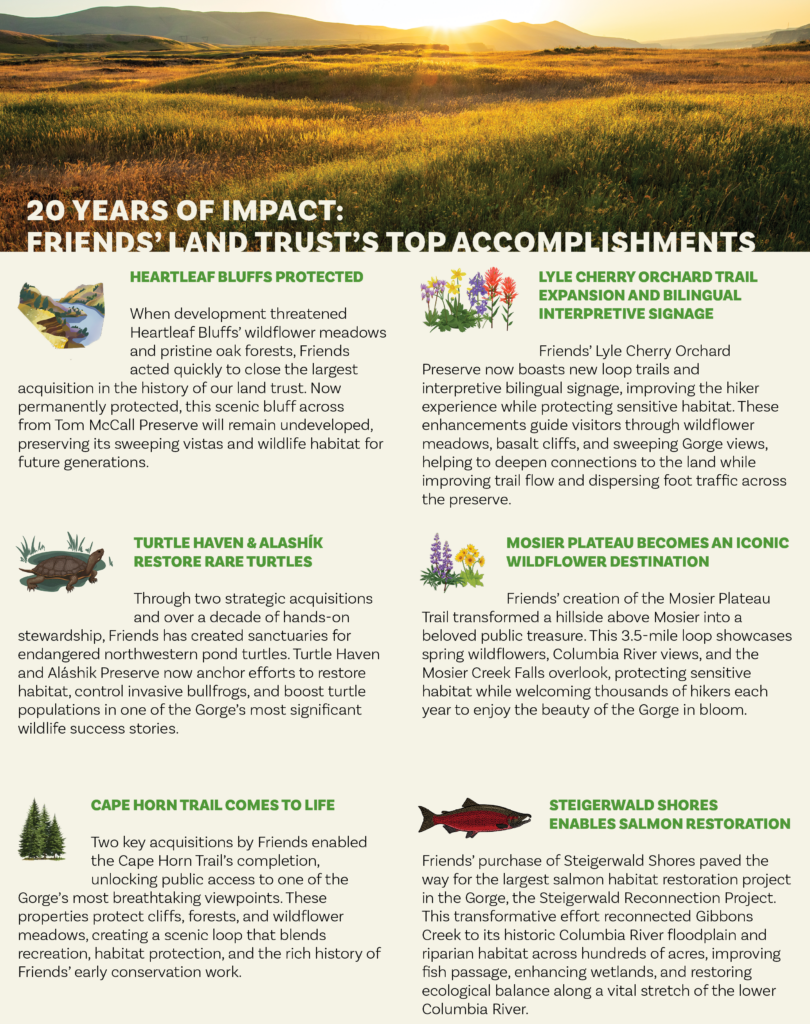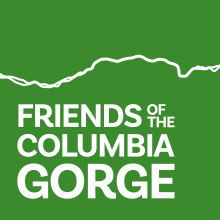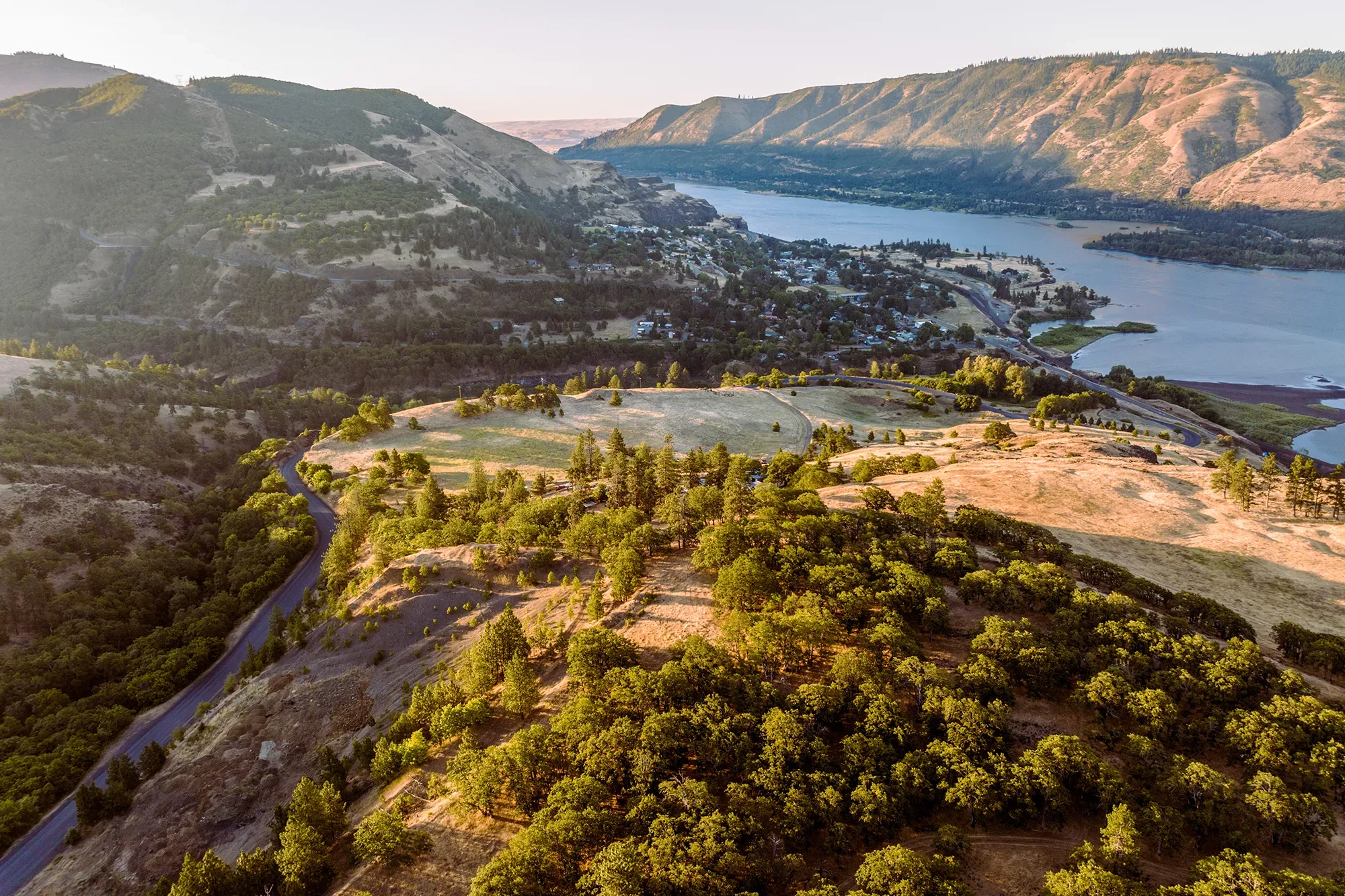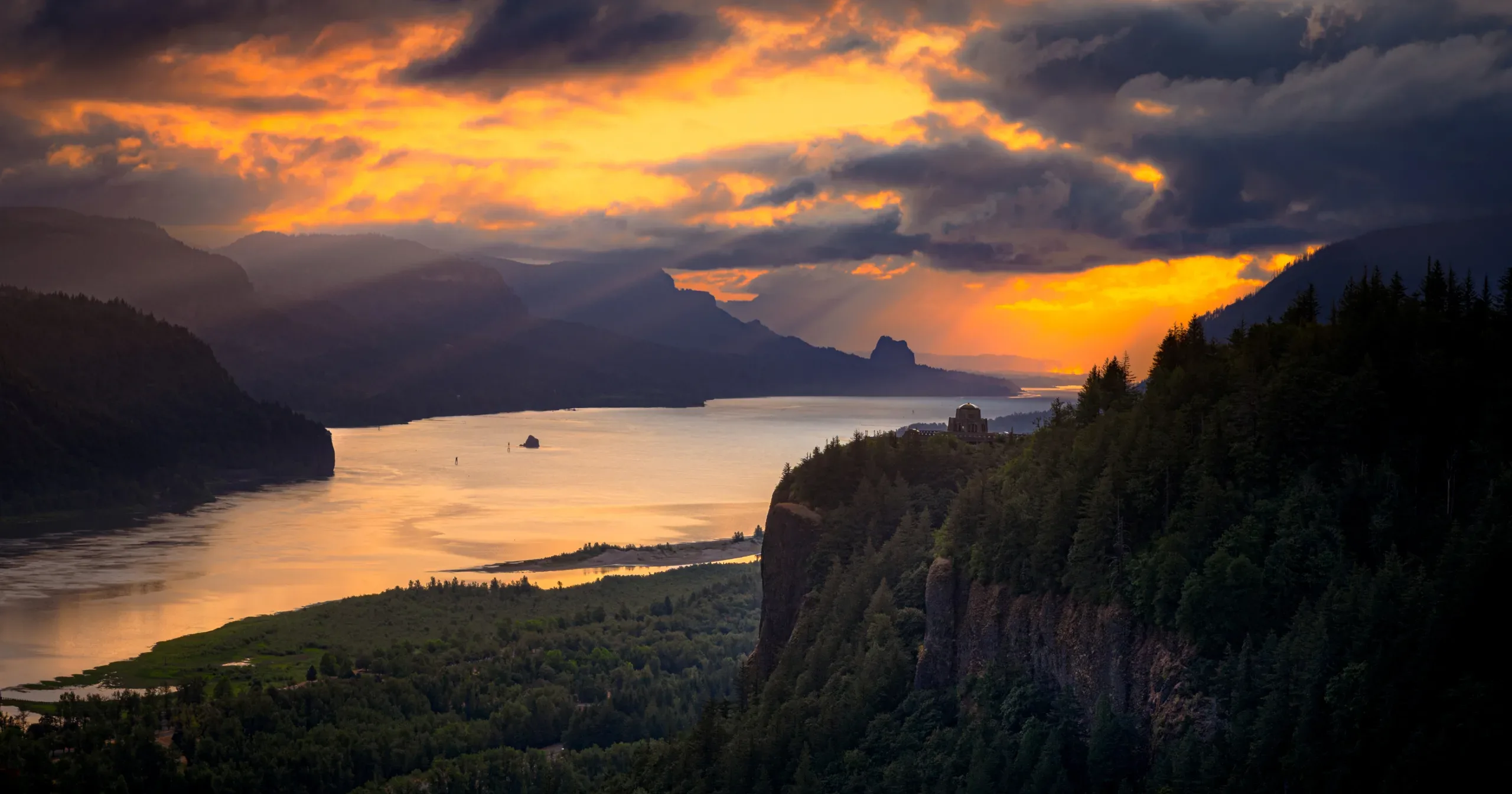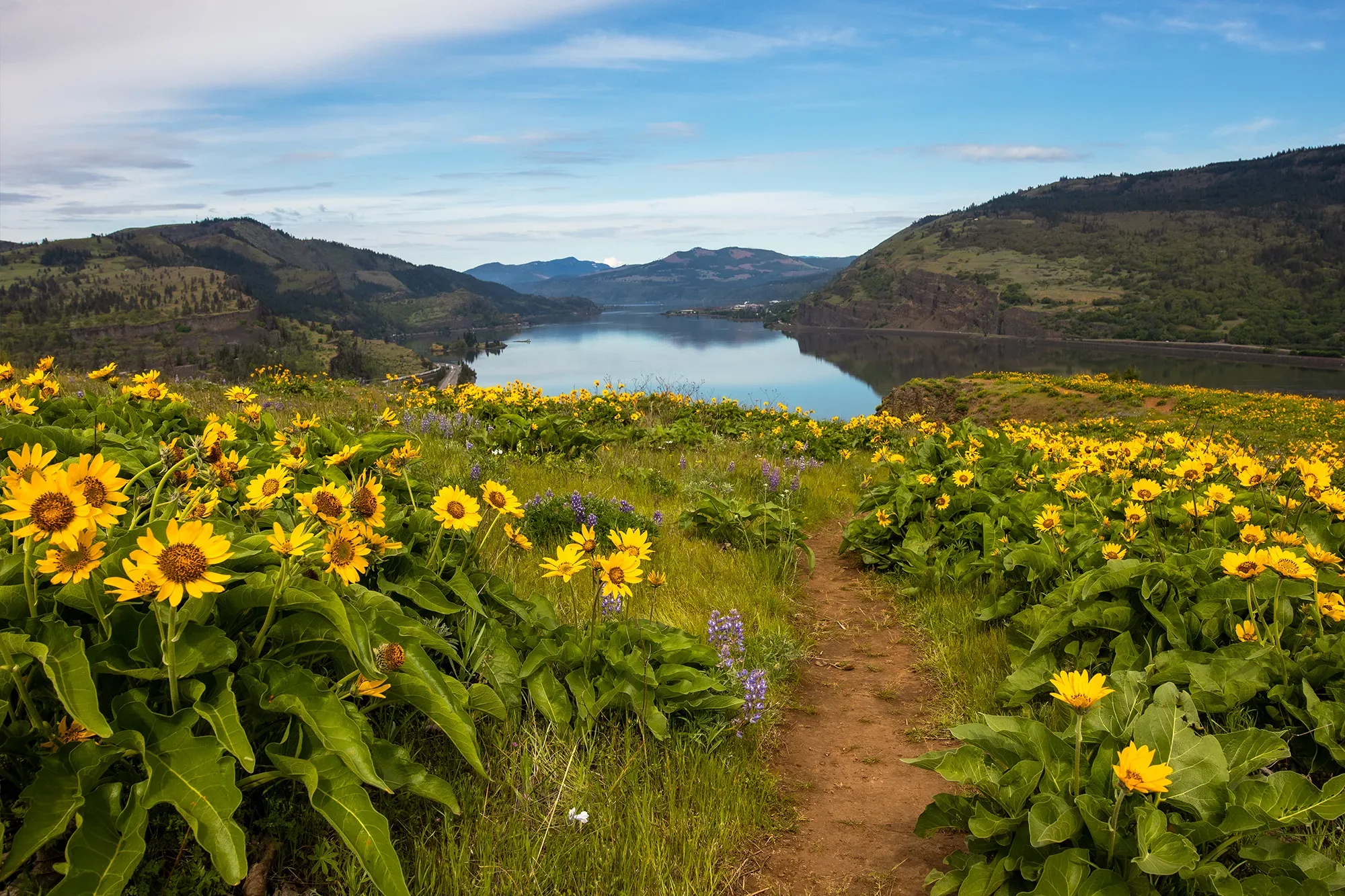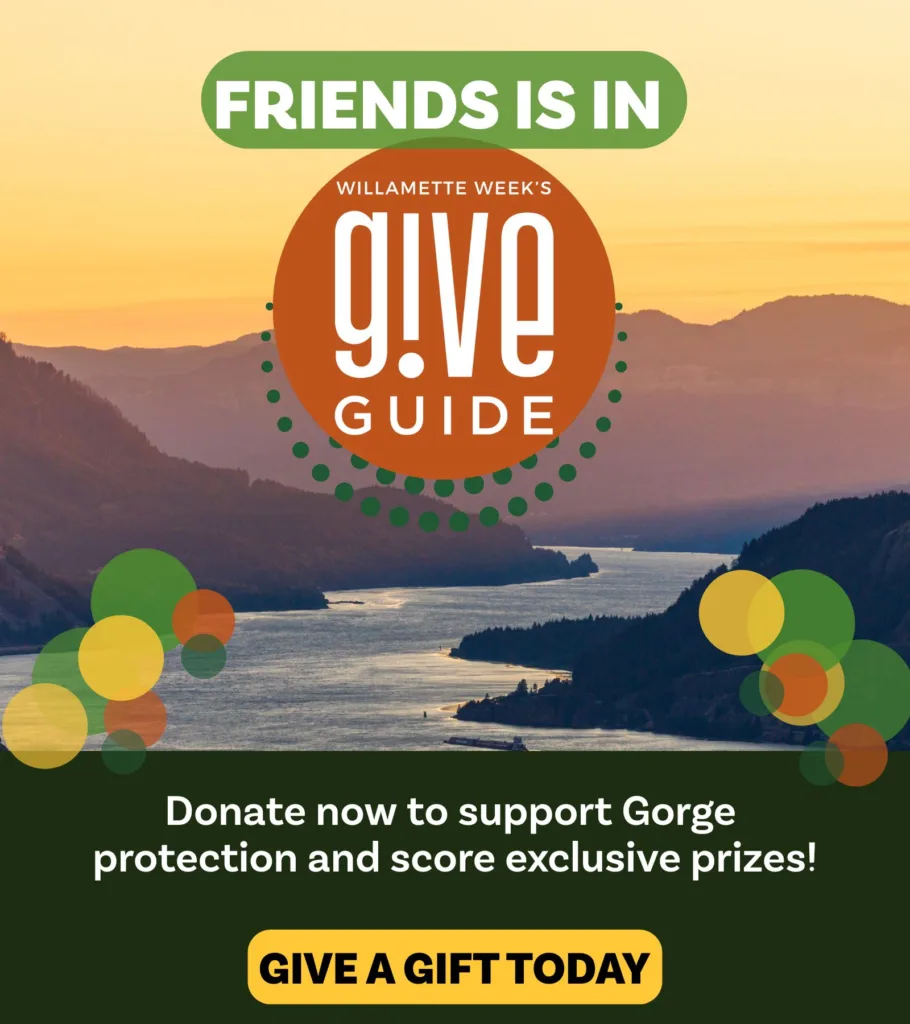As we approach the 20th anniversary of Friends of the Columbia Gorge Land Trust this fall, it’s worth stepping back and acknowledging what an audacious move it was for a conservation advocacy organization to create a land trust and just how the land trust has shaped the Columbia Gorge in those two decades since.
Today, our land trust owns 19 preserves totaling 1,313 acres. Some, such as Mosier Plateau and Lyle Cherry Orchard, are iconic public recreation areas. Other preserves are focused on protecting habitat for plants and wildlife. And some were purchased to ensure scenic landscapes remain undeveloped.
The decision to create a land trust two decades ago was, to say the least, unconventional. The genesis came from Friends’ founder Nancy Russell as she took on the role of a conservation buyer in the early 1990s, purchasing properties other land trusts deemed too controversial or financially challenging. When Nancy was diagnosed with ALS in 2004, the organization not only recognized the importance of continuing her work but also ensuring her lands remained protected.
However, in the early 2000s, conservation advocacy organizations and land trusts did not mix. Land trusts were generally apolitical and steered clear of environmental lobbying, and most advocacy organizations didn’t work with private landowners or understand the ins and outs of real estate. But Friends staff worked with landowners interested in selling their lands to the U.S. Forest Service (USFS) years before we launched the land trust.
Kate McBride, hired in 2006 as the land trust’s first staff member, shared that “the land trust has been such a positive force for the organization. Becoming a Gorge landowner and caring for the land gave Friends a level of local credibility it hadn’t had before.”
Then, on Groundhog Day 2004, Friends received a surprise $4.5 million unrestricted bequest from Norman Yeon—roughly seven times our annual budget at the time (scan the QR code on the right to read the full story). That gift triggered a rapid internal pivot: within 20 months, we launched Friends of the Columbia Gorge Land Trust as a separate entity, hired our first staff, and acquired our first preserve, a four-acre parcel that became the Nancy Russell Overlook on Cape Horn Trail. Together with Nancy’s concurrent ALS diagnosis, these events galvanized our transition from advocacy into land stewardship.
Today, the land trust is a profoundly different organization. We’ve grown from a single staff person into a five-person team covering land stewardship, stewardship volunteers, regional collaboration, and strategic land investment. We’ve acquired, held, and transferred key inholdings and recreation access points to our public partners (582 acres to date).
Over the past 20 years, the land trust has acquired 43 properties totaling 1,775 acres, far exceeding early projections.
Heartleaf Bluffs, one of our most beloved recent acquisitions, stands as a powerful example of community-supported conservation. When this ecologically sensitive property was at risk of becoming multi-million-dollar homesites or a large commercial zipline park, our supporters stepped up. Their generosity, through our Share the Wonder capital campaign, allowed us to purchase and protect it, ensuring that its wildflower meadows, mature forests, and sweeping views remain undeveloped and open for future restoration.
In Skamania County, Friends has emerged as a regional leader in recovering northwestern pond turtles from decades of habitat loss and predation by invasive bullfrogs. Two of our preserves—Turtle Haven and the newly acquired 120-acre Aláshik Preserve—are now keystone sites for this species’ recovery. Alashík’s wetlands, ponds, stream channels, and forested terrain provide some of the most productive turtle habitat in the region, and its protection (secured in collaboration with the Washington Department of Fish & Wildlife, USFS, and the Oregon Zoo) prevented logging and mineral extraction that would have damaged this delicate ecosystem. Together, these preserves offer safe habitat and a base for hands-on conservation work by our land trust team and partners.
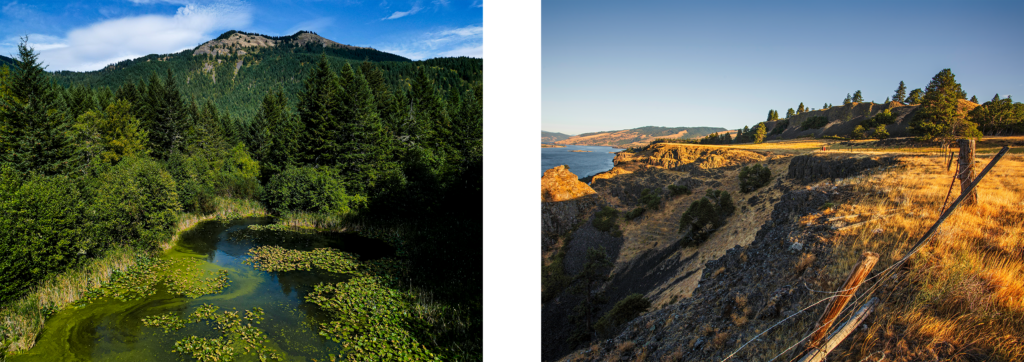
At Steigerwald, our acquisition of Steigerwald Shores facilitated the Steigerwald Reconnection Project, the largest salmon habitat restoration in the history of the Gorge, reconnecting Gibbons Creek to its historic Columbia River floodplain and rewilding riparian ecosystems across hundreds of acres.
As our land trust has grown, so has our commitment to stewarding the land with community involvement. Today, dozens of volunteer stewardship work parties take place across our preserves each year, engaging hundreds of people in habitat restoration, invasive species removal, and climate resilience projects. These efforts not only restore ecological function, they also foster deeper connections between people and the Gorge landscapes they help protect.
One of our most ambitious restoration efforts is currently underway at Cape Horn, where Friends is working to restore more than 100 acres of degraded habitat into a resilient, diverse ecosystem. Long known for its iconic viewpoints and significance to Friends’ history, Cape Horn is now the focus of a vision to bring back native species and reestablish ecological balance in the face of climate change. With support from Share the Wonder and ongoing volunteer engagement, this effort represents a model for what long-term stewardship can look like.
We have also established our role in leading the Gorge Towns to Trails initiative, deepened relationships with Tribal nations, and this year are embarking on a new conservation vision that will guide our work over the coming decade.
It’s an exciting time, and the next 20 years hold plenty of opportunity. And thanks to the ongoing, generous support of our donors and supporters, we continue to think big and broaden the ways in which the land trust can support long-term protection of the Columbia River Gorge National Scenic Area.
